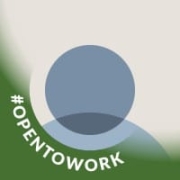Microsoft Power Apps is a rapid application development software and low-code development platform. The solution consists of a suite of apps, services, connectors, and a data platform. It provides an environment for building custom apps which is suitable for different businesses.



| Type | Title | Date | |
|---|---|---|---|
| Category | Rapid Application Development Software | Apr 1, 2025 | Download |
| Product | Reviews, tips, and advice from real users | Apr 1, 2025 | Download |
| Comparison | Microsoft Power Apps vs ServiceNow | Apr 1, 2025 | Download |
| Comparison | Microsoft Power Apps vs OutSystems | Apr 1, 2025 | Download |
| Comparison | Microsoft Power Apps vs Oracle Application Express (APEX) | Apr 1, 2025 | Download |
| Title | Rating | Mindshare | Recommending | |
|---|---|---|---|---|
| ServiceNow | 4.2 | 11.0% | 92% | 216 interviewsAdd to research |
| Appian | 4.2 | 9.4% | 95% | 61 interviewsAdd to research |
Microsoft Power Apps allows users to not only build applications, but also connect them to Microsoft's other sources, including the underlying data platform Microsoft Dataverse, as well as online and on-premise sources such as SharePoint, Dynamics 365, and Microsoft 365. The applications built using Microsoft Power Apps have a responsive design that makes them suitable for work in browsers and on mobile applications on different devices.
The no-code side of the product makes it suitable for complete beginners to app building, allowing them to easily create fully functional applications with many features. The solution also has a specialized platform for developers where specialists can access data and metadata, create custom connectors, integrate with external data, and apply business logic. The solution allows users to create three types of apps: canvas, model-driven, and portal. They are made using:
Microsoft Power Apps Features
The three different design tools of the solution, Power Apps Studio, App Designer, and Power Apps Portals Studio, come with various features which allow users to utilize the tools. Some of these features include:
Microsoft Power Apps Benefits
The product brings various benefits to organizations and individuals who utilize it. Some of the biggest advantages of Microsoft Power Apps include:
Reviews from Real Users
An IT Specialist (INFOSEC) at a government appreciates this tool because it is low-code, low learning curve, and reduces manpower.
Rafael T., a data engineer at NTT Security, likes Microsoft Power Apps, because it is great for making apps quickly, has helpful support, and integrates with Power BI.
Microsoft Power Apps was previously known as PowerApps, MS PowerApps.
TransAlta, Rackspace, Telstra